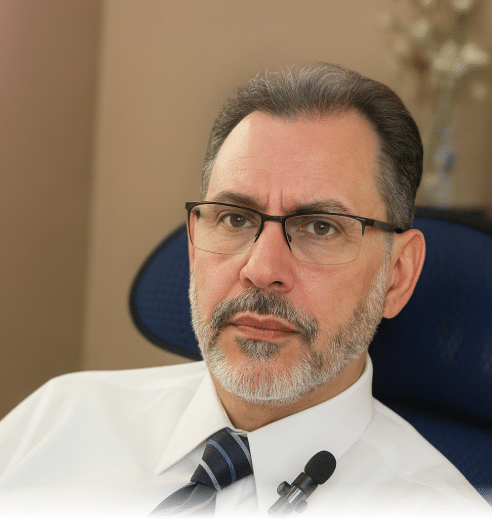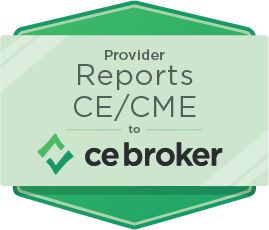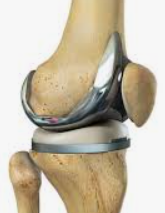CE Broker States
“Approved by CE Broker for 2.5 contact hours (Course #20-1338580). Accepted for PT, PTA, OT, and OTA license renewal in participating states.”
Course Guidelines
Know Before You Go!
We utilize advanced technology to deliver an exceptional and engaging learning experience, including:
- High-speed internet (1.2 GB/s) for stable streaming
- High-definition, multi-view cameras
- Superior-quality audio
- Interactive polls and surveys
- State-of-the-art PowerPoint presentations
Webinar Rules and Guidelines
-
1
Access Code
The webinar access code is confidential and must not be shared.
-
2
Name Display
Enter your name exactly as it appears on your state license.
-
3
Participation
Engage with the presenter during interactive segments.
-
4
Polls & Surveys
Polls/surveys will be conducted throughout the session.
-
5
Quizzes
There will be no quizzes during the live webinar.
-
6
Post-Webinar Requirements
After the webinar, complete the Attendance Verification Quiz (AVQ) and the course evaluation.
-
7
AVQ Attempt
You will have one attempt to complete the AVQ.
-
8
Verification Code (AVC)
The AVC will be announced by the instructor during the webinar.
-
9
Certificate Eligibility
Failure to correctly enter the AVC will result in no CE certificate being issued.
-
10
Camera & Audio
Camera is optional; audio access is required.
-
11
Chat Function
Chat is disabled except during the Q&A segment.
-
12
Device Access
Join from a device that clearly displays the presenter’s screen (dial-in audio only is not permitted).
-
13
Handouts
Handouts will be available in the course curriculum.
-
14
Zoom Access Info
Zoom access information will be provided on the course date.
-
15
Cancellation Policy
Please review the course cancellation policy for details.
-
16
Free Live Webinar Policy
If you register for a free webinar and do not attend, you may be ineligible for future free courses.
Questions? Contact info@ceulogic.com.
Course Outline
🦵🦴💪 Pain Management Following Joint Replacement: Hip, Knee, and Shoulder
Course Description:
This advanced continuing education course examines the mechanisms, trajectories, and management strategies of pain following total joint arthroplasty. The course integrates evidence-based clinical pathways, surgical approach comparisons, robotic-assisted technologies, and pharmacologic/non-pharmacologic interventions to improve post-operative outcomes and reduce chronic pain development.
📈 Module 1 – Overview and Pain Epidemiology
- Incidence and prevalence of persistent pain after total joint arthroplasty (TKA, THA, TSA)
- Public health impact and data trends from national registries (AJRR, ACR)
- Predictors of persistent post-surgical pain (psychological, demographic, biomechanical)
🗓️ Module 2 – The Four Pain Timelines Framework
- Pre-surgical pain: predictors and chronic sensitization
- Surgical pain: nociceptive trajectory and expected resolution
- Post-surgical pathological pain: recognition of abnormal healing responses (e.g., Baker’s cyst, CRPS)
- Therapy-induced pain: rehabilitation dosing, load management, and patient reassurance
🔪 Module 3 – Surgical Approaches and Pain Implications
- Comparative pain outcomes by surgical approach:
- 🦵 Knee: Parapatellar, Subvastus, Midvastus, Quadriceps-sparing
- 🦴 Hip: Posterior, Lateral, Anterior
- 💪 Shoulder: Deltopectoral, Superolateral
- Alignment, soft-tissue handling, and malrotation as pain determinants
- Evidence-based comparison of pain intensity and duration among the three joints
💉 Module 4 – Intraoperative and Perioperative Pain Reduction Strategies
- Regional anesthesia, neuraxial blocks, and local infiltration analgesia
- Pre-emptive multimodal analgesia protocols
- Impact of surgical technique, alignment precision, and intraoperative trauma minimization
- Role of robotic-assisted arthroplasty (TKA, THA, TSA) in reducing early postoperative pain
💊 Module 5 – Postoperative Pain Management
- Pharmacologic interventions across the four pain timelines
- NSAIDs, COX-2 inhibitors, acetaminophen, gabapentinoids, and emerging Nav1.8 inhibitors (Suzetrigine)
- Multimodal analgesia and opioid tapering strategies
- Role of physical therapy, cryotherapy, NMES, and patient education
🚨 Module 6 – Complications and Red Flags
- Pathological pain triggers: infection, DVT, malalignment, arthrofibrosis, CRPS
- Recognizing deviation from normal healing trajectories
- Clinical documentation and early interdisciplinary communication
⚖️ Module 7 – Clinical Decision-Making, Quality, and Legal Considerations
- Case study integration of pain timeline concepts
- Documentation best practices for pain progression and intervention
- Setting realistic expectations and mitigating medico-legal risk
Course Objectives
🎯 Learning Objectives
Upon completion of this course, participants will be able to:
- 1. 🗓️ Differentiate between pre-surgical, surgical, post-surgical pathological, and therapy-induced pain timelines following total joint arthroplasty.
- 2. 👥 Identify patient-specific and procedural predictors associated with persistent or exacerbated postoperative pain.
- 3. 🔪 Compare surgical approaches for knee, hip, and shoulder replacements in terms of pain onset, duration, and rehabilitation implications.
- 4. 🧩 Implement multimodal pain management strategies—pharmacologic, non-pharmacologic, and intraoperative—to reduce nociceptive load and central sensitization.
- 5. 🚨 Recognize early clinical signs of abnormal pain patterns such as CRPS, Baker’s cyst formation, or implant malalignment, and initiate timely interdisciplinary interventions.
- 6. 📋 Design individualized rehabilitation plans that balance mobility restoration with pain modulation, emphasizing safe tissue loading and patient reassurance.
- 7. 📝 Integrate evidence-based pain management into documentation and communication practices to enhance quality of care and minimize medico-legal risk.
Course Instructor

Dr. Osman, PT, DPT, MS, OCS
Professional Summary & Credentials
Dr. Osman is an experienced clinician, continuing education instructor, expert witness, audit reviewer, and appeal letter specialist. He earned his Bachelor of Science in Physical Therapy (1987), Master’s Degree in Physical Therapy (2000), and Doctor of Physical Therapy (DPT) (2010). He is Board Certified in Orthopaedic Physical Therapy by the American Board of Physical Therapy Specialties (ABPTS) (1999) with recertifications in 2009 and 2019.
Affiliations
Areas of Interest
- Pain management
- Clinical research & patient education
Additional Skills
- Database programming
- Website development
Research (Upcoming)
Career Highlight
Treated Mike Ditka, former Chicago Bears head coach and 1985 Hall of Fame inductee.





